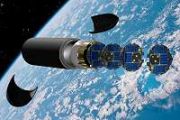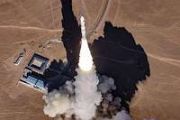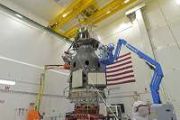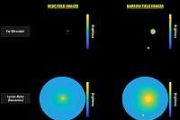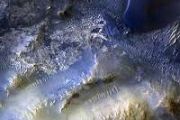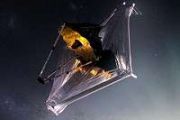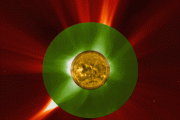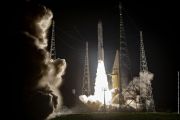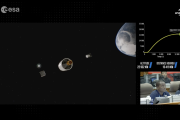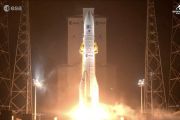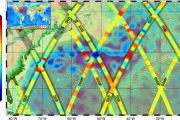
Copernical Team
Space Applications drives lunar mobility forward with new rover initiatives
 Space Applications Services is accelerating its efforts in lunar exploration with two major rover initiatives: the commercially targeted LUVMI-M and the European Space Agency (ESA)-backed LPSR logistics rover. These projects highlight the company's strategic role in shaping the mobility infrastructure for both private and public lunar ventures.
h3>LUVMI-M: Versatile Rover for Commercial P
Space Applications Services is accelerating its efforts in lunar exploration with two major rover initiatives: the commercially targeted LUVMI-M and the European Space Agency (ESA)-backed LPSR logistics rover. These projects highlight the company's strategic role in shaping the mobility infrastructure for both private and public lunar ventures.
h3>LUVMI-M: Versatile Rover for Commercial P GITAI to Design Robotic Arm for JAXA Crewed Lunar Rover
 GITAI, a robotics firm with headquarters in the United States, has announced that its Japanese division, GITAI Japan Inc., has secured a contract with the Japan Aerospace Exploration Agency (JAXA) to develop a concept study for a robotic arm system designed for a pressurized crewed lunar rover. This rover project forms part of Japan's broader involvement in NASA's Artemis initiative, focusing on
GITAI, a robotics firm with headquarters in the United States, has announced that its Japanese division, GITAI Japan Inc., has secured a contract with the Japan Aerospace Exploration Agency (JAXA) to develop a concept study for a robotic arm system designed for a pressurized crewed lunar rover. This rover project forms part of Japan's broader involvement in NASA's Artemis initiative, focusing on Safely back on Earth, once-stranded US astronauts ready to fly again
 After spending more than nine months stranded in space, two American astronauts confirmed Monday that they're ready to blast off again aboard a Boeing Starliner, the very spacecraft that could not return them to Earth.
In their first NASA press conference since their long-awaited splashdown on March 18, astronauts Butch Wilmore and Suni Williams responded to the question of whether they woul
After spending more than nine months stranded in space, two American astronauts confirmed Monday that they're ready to blast off again aboard a Boeing Starliner, the very spacecraft that could not return them to Earth.
In their first NASA press conference since their long-awaited splashdown on March 18, astronauts Butch Wilmore and Suni Williams responded to the question of whether they woul ICEYE to supply radar satellite imagery for NATO decision support
 ICEYE, a global frontrunner in Synthetic Aperture Radar (SAR) satellite technology, has revealed a new partnership to deliver satellite imagery to the Situation Center (SITCEN) at NATO Headquarters.
This strategic agreement will provide SITCEN with direct access to ICEYE's advanced Earth observation capabilities, significantly enhancing its ability to supply timely, data-backed insights to
ICEYE, a global frontrunner in Synthetic Aperture Radar (SAR) satellite technology, has revealed a new partnership to deliver satellite imagery to the Situation Center (SITCEN) at NATO Headquarters.
This strategic agreement will provide SITCEN with direct access to ICEYE's advanced Earth observation capabilities, significantly enhancing its ability to supply timely, data-backed insights to Could crustal churning power Venus volcanoes
 Venus, a searing world cloaked in dense clouds and blanketed by volcanic structures, may possess a geologically dynamic crust far more active than previously believed. New findings from scientists at Washington University in St. Louis suggest that the planet's outer layer could be undergoing convection, a process rarely associated with planetary crusts, offering fresh insight into the planet's r
Venus, a searing world cloaked in dense clouds and blanketed by volcanic structures, may possess a geologically dynamic crust far more active than previously believed. New findings from scientists at Washington University in St. Louis suggest that the planet's outer layer could be undergoing convection, a process rarely associated with planetary crusts, offering fresh insight into the planet's r Space Debris: Is it a Crisis?
 Video:
00:08:04
Video:
00:08:04
Space Debris: Is it a Crisis?
The European Space Agency’s short documentary film ‘Space Debris: Is it a Crisis?’ on the state of space debris premiered at the 9th European Conference on Space Debris on 1 Apr 2025.
Earth is surrounded by thousands of satellites carrying out important work to provide telecommunications and navigation services, help us understand our climate, and answer fundamental questions about the Universe.
However, as our use of space accelerates like never before, these satellites find themselves navigating increasingly congested orbits in an environment criss-crossed by streams of fast-moving debris fragments resulting from collisions, fragmentations and
SpaceX launches another 28 satellites into orbit from Florida
 SpaceX on Monday launched another batch of satellites from Starlink mission launches from Florida on Monday afternoon, about 5 1/2 hours before another Falcon 9 nearby sent a privately funded crew into space.
The SpaceX rocket lifted off at 3:52 p.m. EDT, sending 28 Starlink satellites into low Earth orbit from Page 40. This was the 17th flight for the first stage booster, including 11
SpaceX on Monday launched another batch of satellites from Starlink mission launches from Florida on Monday afternoon, about 5 1/2 hours before another Falcon 9 nearby sent a privately funded crew into space.
The SpaceX rocket lifted off at 3:52 p.m. EDT, sending 28 Starlink satellites into low Earth orbit from Page 40. This was the 17th flight for the first stage booster, including 11 SpaceX launches private astronauts on first crewed polar orbit
 SpaceX launched the first human spaceflight directly over Earth's polar regions on Monday - a days-long, privately funded orbital mission involving four astronauts.
Named "Fram2" after the famed Norwegian ship built in the 19th century for Arctic and Antarctic expeditions, the mission will feature a range of experiments including taking the first X-ray in space and growing mushrooms in micr
SpaceX launched the first human spaceflight directly over Earth's polar regions on Monday - a days-long, privately funded orbital mission involving four astronauts.
Named "Fram2" after the famed Norwegian ship built in the 19th century for Arctic and Antarctic expeditions, the mission will feature a range of experiments including taking the first X-ray in space and growing mushrooms in micr Femur bone density loss in mice aboard the ISS sheds light on space travel challenges
This request seems a bit unusual, so we need to confirm that you're human. Please press and hold the button until it turns completely green. Thank you for your cooperation!
Press and hold the button
If you believe this is an error, please contact our support team.
185.132.36.159 : 419e61f9-2b58-4118-8809-9578e4e9





